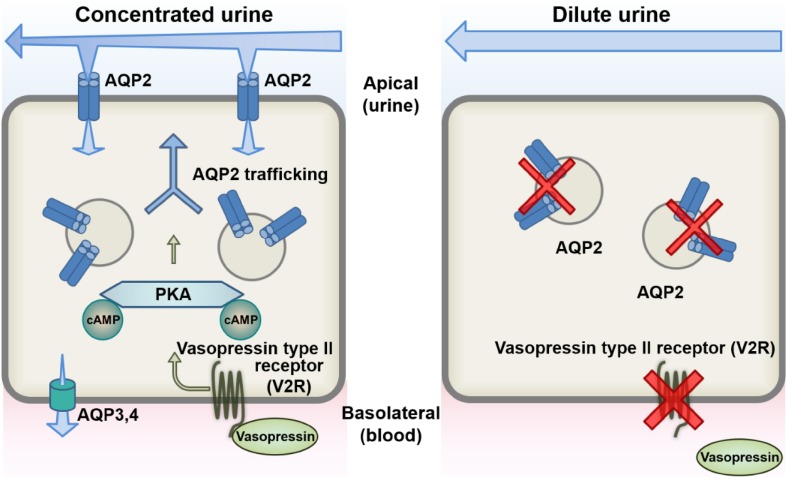Fig. 1.
The mechanisms of urine concentration by vasopressin. (Left) Circulating vasopressin binds to V2R in the basolateral membrane of cells of the renal collecting ducts. Adenylyl cyclase is then activated and increases cAMP production and PKA activity, leading to AQP2 phosphorylation. Changes in AQP2 phosphorylation status leads to translocation of cytosolic AQP2 to the apical plasma membrane. Water is reabsorbed from urine through AQP2, AQP3, and AQP4, thereby concentrating the urine. (Right) V2R mutations account for 90% of all diagnoses of congenital NDI, while AQP2 mutations occur in the other 10%. Defective V2R or AQP2 function impairs water reabsorption, resulting in urine dilution

